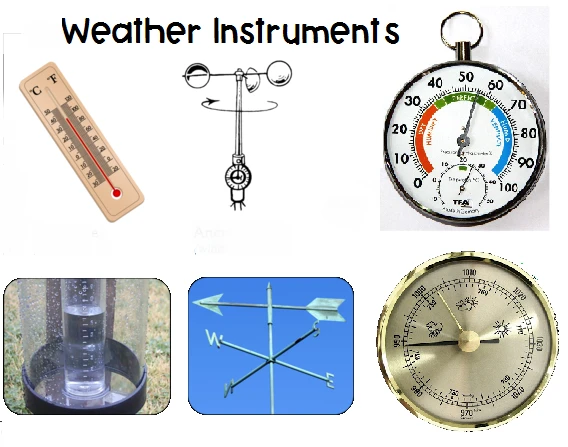Weather Instruments: Essential Tools for Meteorological Observations

# Weather Instruments: Essential Tools for Meteorological Observations
## Introduction to Weather Instruments
Weather instruments are specialized tools designed to measure various atmospheric conditions. These devices play a crucial role in meteorology, helping scientists and weather enthusiasts collect accurate data about our environment. From simple thermometers to sophisticated radar systems, weather instruments provide the foundation for weather forecasting, climate studies, and environmental monitoring.
## Common Types of Weather Instruments
### Thermometers
Thermometers measure air temperature, one of the most fundamental weather parameters. Modern digital thermometers provide quick and accurate readings, while traditional mercury or alcohol thermometers remain reliable options.
### Barometers
Barometers measure atmospheric pressure, which helps predict short-term weather changes. Mercury barometers and aneroid barometers are the two main types used in meteorological observations.
### Hygrometers
These instruments measure humidity levels in the air. Psychrometers (wet-and-dry bulb thermometers) and electronic hygrometers are commonly used to determine relative humidity.
### Anemometers
Anemometers measure wind speed, while wind vanes determine wind direction. Cup anemometers and propeller anemometers are widely used in weather stations.
### Rain Gauges
Rain gauges collect and measure precipitation. Standard rain gauges, tipping bucket gauges, and weighing gauges are the primary types used by meteorologists.
## Advanced Weather Measurement Tools
### Weather Radars
Modern weather radars can detect precipitation, measure its intensity, and track storm movements. Doppler radar technology has revolutionized severe weather detection.
### Weather Satellites
Geostationary and polar-orbiting satellites provide comprehensive views of weather systems across large areas, enabling global weather monitoring.
### Weather Balloons
Equipped with radiosondes, weather balloons collect atmospheric data at various altitudes, including temperature, humidity, and pressure measurements.
## The Importance of Weather Instruments
Accurate weather instruments are essential for:
– Reliable weather forecasting
– Climate change research
– Aviation safety
– Agricultural planning
– Disaster preparedness
– Scientific research
## Maintaining Weather Instruments
Proper maintenance ensures accurate measurements:
– Regular calibration against known standards
– Protection from environmental damage
– Proper siting according to meteorological standards
– Routine cleaning and inspection
## Conclusion
Weather instruments form the backbone of meteorological science. As technology advances, these tools continue to evolve, providing more precise data that helps us understand and predict weather patterns. Whether for professional meteorologists or amateur weather enthusiasts, understanding and properly using these instruments is key to obtaining reliable weather information.
Keyword: wether instruments